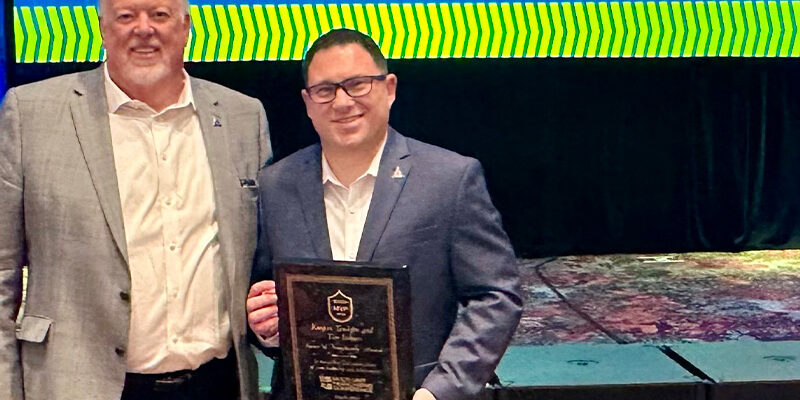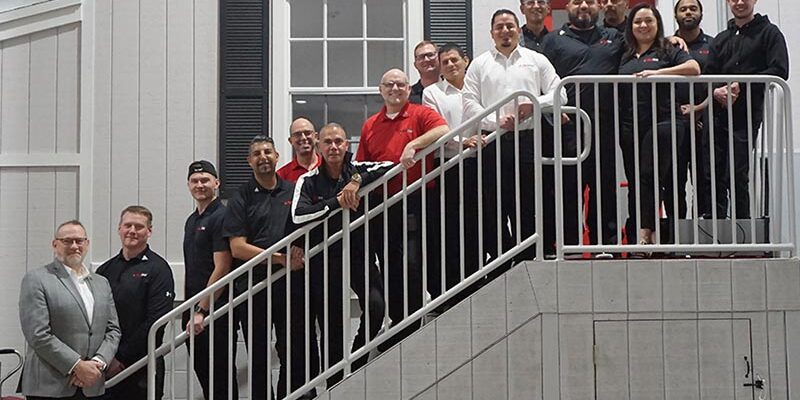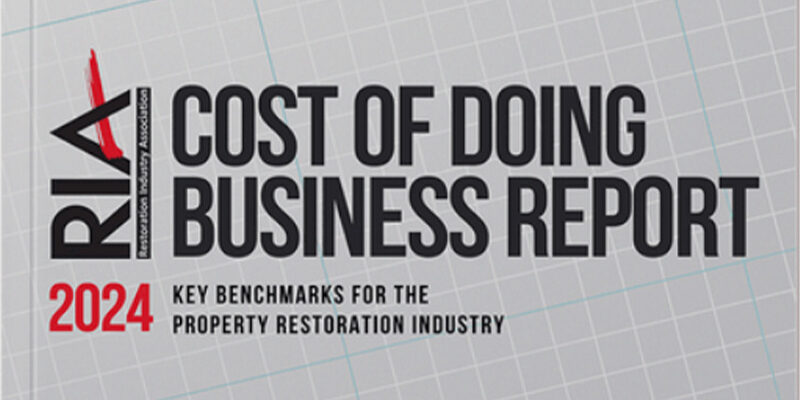Chasing the storm

by Pete Consigli
The 2005 hurricane “season” began this year with the earliest Category 4 storm in history — Hurricane Dennis — blowing through the Atlantic and striking the Gulf Coast, wreaking devastation in its path.
Hurricane Dennis, and the subsequent hurricanes — especially Katrina and Rita — set up opportunity for the restoration industry.
The potential profits from “storm chasing” are often irresistible to the cleaning and restoration industry.
Restorers — and potential restorers — need useful information if they are considering venturing into Florida, Mississippi, Louisiana or other hurricane states.
There are many pitfalls awaiting the unsuspecting “adventurer” looking for the pot of gold at the end of the clean-up and drying rainbow.
Getting the work
Catastrophic disaster work is not your typical water damage or flood job resulting from a broken pipe.
More and more state and local governments are stepping up to the plate and putting new rules into force that protect residents and victims of storms.
Florida hurricane rule
One example: Shortly after Hurricane Dennis hit the Florida panhandle, the state’s chief financial officer, Tom Gallagher, issued an emergency rule to protect victims of the hurricane by capping public adjuster fees at 10 percent of the claim payment and giving customers up to 14 days to rescind a contract with a public adjuster (PA) without penalty.
The emergency rule also prohibits a PA from demanding or accepting any type of compensation prior to settlement of the claim.
This information is found in the Insurance Journal, Southeast edition, the week of July 11, 2005. That article also lists a storm hotline (800)-22-STORM, and suggests visiting www.fldfs.com for more information.
Defining and differentiating catastrophic occurrences
Before entering into a discussion on catastrophic disaster mitigation, it might be helpful to define the terminology used when referring to these kinds of occurrences.
For the purpose of this article, a catastrophic occurrence will be defined as an incident causing major damage to a building structure and its contents from a natural disaster or man-made failure.
The natural disaster portion of this definition is sometimes referred to as an “Act of God”, and can immediately create an image of extreme destruction caused from hurricanes, tornadoes, wild fires, earthquakes, ice and hail storms — or even a blizzard.
From the perspective of the man-made failure portion of the definition, this is often referred to as a “major loss” usually as a result of fire or water damage to a commercial or industrial property.
This type of extreme damage can be the result of a plumbing failure on the upper floor of a high rise building to an electrical fire in a factory, or even an arson incident by a disgruntled employee in an office complex where the primary damage may be caused from the sprinkler system that ran for several minutes to over an hour before the fire department was able to disarm the system.
These kinds of events are often called “one time or single site occurrences” in the catastrophic disaster vernacular.
From minor to major
These types of losses have unique challenges facing the enterprising cleaner/ restorer, which differentiate the clean-up efforts from residential projects.
But, these challenges can pale in comparison to the obstacles facing novices who enter the arena of mitigation, drying and restoration of damage due to natural disasters from “Acts of God”.
This type of major loss is often called “area wide damage”, which will differentiate it from the single site occurrence.
This is important to understand because expanding one’s services from the residential segment to major commercial losses is normally a progressive process a cleaning and restoration company will go through as the business is grown and slowly scales the learning curve required to profitably handle these larger and more complex projects.
Chasing the storm — slowly
If a company becomes proficient in making this expansion which will transcend the business to another level, the next phase may be to handle these large losses several miles from its home base and/or even multiple states away.
Running restoration projects far from the company’s home base now entails a host of new challenges that must be addressed for a successful and profitable project to be completed.
This additional dynamic is now another important and critical challenge that must be faced and overcome to reach the next level of the catastrophic disaster mitigation continuum.
The peak of the upward spiral in this progressively more challenging learning curve would be to demonstrate a proficiency in the timely mobilization, staging, and delivery of resources (labor, equipment, and supplies) to the heart of a disaster region to commence clean up as soon as building structures are declared safe to enter.
Evolving from typical to catastrophic disaster
The orders of magnitude for mastering the learning curve from residential restoration, to commercial work in your primary service area, to single site large losses several miles away, to actively pursuing and engaging in the mitigation of area-wide damage in catastrophically affected disaster regions is progressively more difficult and risk adverse.
This occurs as one works to reach the perceived pot of gold awaiting those successful adventuresome restorers who find the end of the disaster rainbow.
To put this in a perspective that most cleaners and restorers can relate to, think about the challenges, obstacles and learning curve you may have experienced when trying to tackle more difficult carpet and upholstery cleaning jobs or larger and more complex water damage restoration projects.
Think about the difference between cleaning a simple carpet or textile such as a level loop olefin or Herculon sofa versus a wool Berber or antique linen chair.
How about drying a single level “clean water” wet carpet as opposed to a multi level sewage back flow?
What about the unique challenges and risks faced when you are called upon to correct a “brown out” on a $150/yard carpet or remove a water stain from a delicate fabric on one chair that is part of a set of eight?
If that multi-level flooded structure has saturated plaster and concrete, the level of competency and type of equipment required is usually not found with a company that just completed its first water damage training course and purchased a starter “package” from its local supplier.
Every professional carpet cleaner or restorative drying contractor worth their salt can immediately visualize and relate to these analogies.
Many restorers have plotted and planned their “storm chasing” career and now have the ability to take on more difficult and profitable jobs or multiple projects during “peak” periods.
Be progressive
The level of difficulty you can expect to encounter when traveling the path from residential work to area-wide disaster restoration will be 10 to 50 times more difficult than mastering the skills required going from an apprentice cleaner to a journeyman.
The same analogy would apply for the novice restorative drying technician to reach the same level of competency to dry and restore that building with saturated plaster.
If you compare the learning curve for either of these two analogies to that of the catastrophic disaster mitigation upward spiraling continuum, you will find a difficulty and risk factor of 10 to 50 times greater.
In a post 9/11 world, and in the immediate aftermath of Hurricanes Katrina and Rita, through the mechanism of 24-hour worldwide news coverage, a new dynamic has emerged for those wishing to enter these ravaged regions and “ profit” from others misery — public perception!
Katrina changed the rules
After Hurricane Katrina, it seems the rules have changed as the level of destruction and personal suffering so many experienced was witnessed by the continual news coverage.
This added an additional burden to those companies (no matter how well intentioned to do the right thing) wishing to perform clean up and drying services to flood victims and businesses.
It would be an understatement to say this kind of work for the non-prepared, under-trained, and clueless gold digging restoration profiteer can lead to problems for the restorer and also create a black eye for the industry from which they derive their livelihood.
To find your own proof to these points, participate in an industry bulletin board such as found at www.cleanfax.com, and visit the various trade association websites.
What you will find is a range and plethora of sentiments expressed by cleaners and restorers who are working in these hurricane ravaged regions or those who are freely sharing past similar experiences.
The messages posted, hopefully in a spirit of industry camaraderie, and the lessons to be learned by those with less field experience will not only be enlightening, but sobering.
It may cause many to rethink their strategy before attempting to negotiate the slippery slope of catastrophic restoration.
Time to invest
It should go with out saying that before tackling any facet of catastrophic type restoration work, a prerequisite to searching for the golden “nuggets” would be proper training for the estimating, supervision, and production personnel performing the work.
Owners and managers also need training, but a different type than what you might suspect.
The people in the trenches need technical training in mitigation, drying, restoration and remediation best industry practices to perform to a competent “standard of care”.
Additionally, they should be properly versed in prudent health and safety protocols, and also skillful in clearly and accurately communicating with customers, their insurance representatives, and others having an interest in the project.
The other kind of training is not necessarily found in a classroom or textbook, but rather is a sense of entrepreneurial savvy, common sense, and a spirit and intent to habitually practice due diligence while looking for Win –Win opportunities.
Look at the road ahead
Prudent decisions need to be made long before the need arises to have access to the proper equipment for the intended application.
Other important questions to be asked, debated, and answered by the management team would be:
- How do we accommodate our “bread and butter” customers already on our plate?
- What steps will be taken to ensure lodging for our crews in a “war zone” like region after a catastrophic occurrence?
- Has your company researched the financial commitments it will take to survive the treasure hunt?
- Have you researched legal and liability exposures you and your company may encounter?
It is a good idea to seek counsel from your attorney, certified public accountant, banker, and other professional advisers you confide in.
These suggestions are not meant to be all encompassing, but will get you started with your pick and axe in the right direction.
Every good fortune hunter knows if they don’t have a trustworthy map, they will never discover the buried treasure.
Your map is a well-thought-out plan that can help you beat other marauding pirates to the bounty, which are profitably completed restoration projects with happy customers who will hire and/or recommend you again and again!
Unexpected pitfalls lay ahead
The potential risk to the well meaning cleaning and restoration professional attempting to solicit work in these catastrophically hit regions following a hurricane or other natural disaster can be the equivalent of negotiating a mine field.
Besides the complications that may arise from a public adjuster involved in a loss, there are state contractor laws and other consumer protection statues (both local and statewide) that the damage restoration professional should be aware of and in compliance.
These laws are designed to protect the public from unscrupulous operators (something the carpet cleaning profession is aware of from bait-and-switch tactics), poor workmanship, worker protection, and compliance with building codes, lien laws and other regulations affecting property repair and renovation work.
One final suggestion for those bound and determined to enter this risky but potentially rewarding niche of the restoration field: Avoid “Lone Ranger”-like tactics and try to work with a local colleague who has ties to the community and more work than he can handle.
Since certain regions are adverse to the same kinds of disaster strikes year after year, the restoration contractors based in close proximity are often called upon as the local and “trusted” expert.
In most cases, the amount of customers needing service is more than the local company can handle.
In many instances, out-of-state crews can work under the license of the local company, and avoid the problems associated with the invading hordes that often try to capitalize from these disaster zones by using high pressure tactics to get work.
Many of the more prominent restoration firms that may be seen at industry events “talking” about their successful bounty from past adventures are in fact making it sound far too easy or way too hard.
The reason for this is that if it sounds too easy, it is probably boasting to their peers, and if it sounds too hazardous, that is a ploy to discourage others from adding to the competition!
The fact is that many of the more successful operators have earned their stripes from hard work, great risk, lessons learned, reinvesting back into their infrastructure after a windfall “season”, and paying their dues over several adventures before they were able to spot the rainbow and that proverbial pot of gold.
Final thoughts
Anyone wishing to partake in this journey should have a good strategy.
One such strategy to consider would be to first seek out these boastful “pirates” and buy them a drink or share a meal to see what wisdom they may share.
Another choice would be to locate some of those “nay-saying” scoundrels, corner them, and see if they can use a good, out-of-state crew to support cleanup efforts and help them serve their pre-qualified clients, which is where most of the work comes from in the first place.
Those who have the passion to expand their business into this area should do their homework first and look to build a relationship with industry colleagues who have already scaled the slippery slope of catastrophic occurrence mitigation, drying, restoration and remediation work.
Learn from their lessons so you don’t repeat the same mistakes.
Pete Consigli, CR, is an independent consultant, specializing in training for the restoration, insurance, and IAQ industries. He is a noted author in the restoration industry and a frequent presenter or panel moderator at industry gatherings. An industry activist for more than 35 years, his mission is to help advance a maturing industry by advocating the use of best practices on a global scale.












